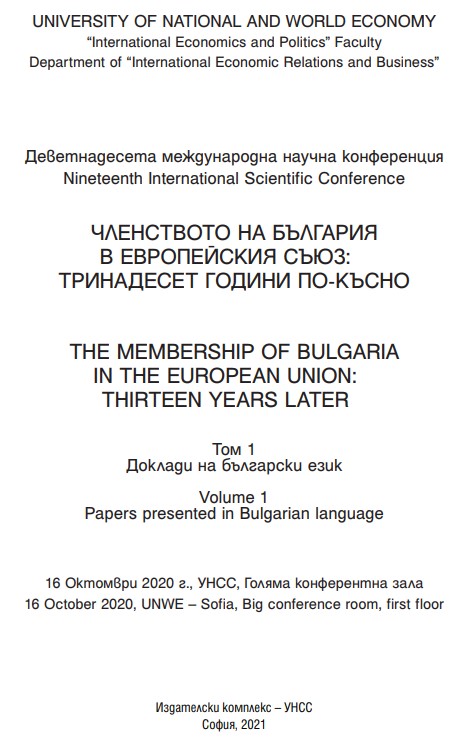Мониторинг и оценка на въздействието на кохезионната политика за държавите-членки на ЕС от Централна и Източна Европа (2007-2018 г.)
Monitoring and Impact Assessment of the EU Cohesion Policy on the Member States from the Central and Eastern Europe (2007-2018)
Author(s): Mariela Savkova
Subject(s): Politics / Political Sciences, Politics, Economy, Supranational / Global Economy, EU-Approach / EU-Accession / EU-Development
Published by: Университет за национално и световно стопанство (УНСС)
Keywords: Socio-Economic Cohesion; Regional Disparities; Theory of Regional Disparities; Regionalism; Cohesion Borderland Poverty Line; Less-Developed and Catching Up Regions
Summary/Abstract: The threat of major regional disparities in the EU affects the core of the European integration process. That is why in the 90s of the 20th century the Member States adopted socio-economic cohesion in the Union as their primary objective. Thus, from the first Multiannual Financial Framework (1988) until today, they allocate more than one-third of their budget to the regions that are lagging behind in their socio-economic development. How has this goal been implemented in the new member-states (MS) from the Central and Eastern European (CEE) countries and does the European funds improve cohesion with the EU? The study evaluates the level of cohesion of eleven MS from the Central and Eastern Europe and their fifty-nine NUTS 2 regions, following the completion of a full multiannual financial framework with the EU. These are the Czech Republic, Poland, Hungary, Slovakia, Slovenia, Estonia, Lithuania, Latvia, Romania, Bulgaria and Croatia. The subject of this study are the factors that accelerate and slow down the process of socio-economic cohesion within the EU. A theory of regional inequalities is studied, related concepts have been outlined and respective conclusions drawn.
Book: Членството на България в Европейския съюз: тринадесет години по-късно
- Page Range: 330-365
- Page Count: 36
- Publication Year: 2021
- Language: Bulgarian
- Content File-PDF

